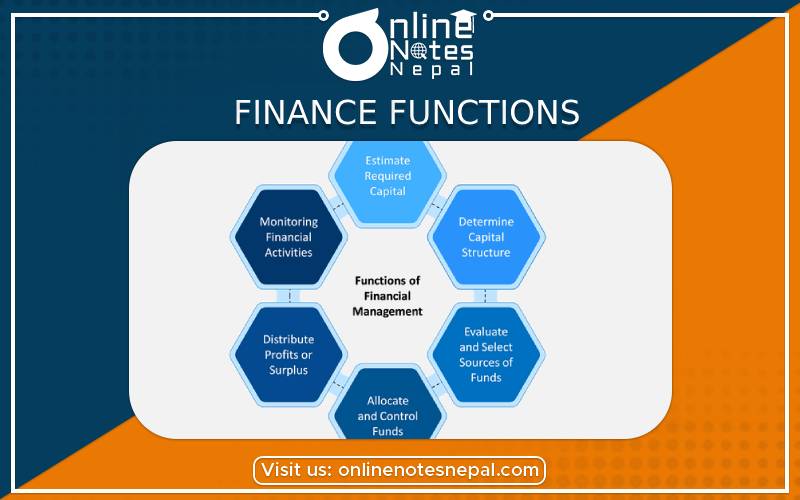Published by: Nuru
Published date: 28 Jan 2022

Finance functions
Finance functions are classified into two different functions. They are:
It includes the following functions:
a. Investment decision or Capital budgeting decision:
It is the managerial decision regarding investment in long-term investment proposals. It includes the decisions concerned with the acquisition, modification, and replacement of long-term assets like plant, machinery, equipment, land, and buildings.
Long-term benefits are derived over the periods, and they are uncertain and risky as well. Therefore, the financial managers should estimate the expected risk and return of the long-term investment in projects. Then, the financial manager only accepts the project of long-term investments if the return is higher than the investment and investment maximizes the shareholders.
Shareholder's wealth is maximized only if the present value of benefits from the investment proposal exceeds the present value of cost.
b. Financial Decision or Capital Structure Decision:
It is concerned with determining the sources of funds and deciding upon the proportionate mix of funds from different sources.
The financial manager should assess what amount of capital is needed and which sources could be relied upon. The funds can be collected from various short-term and long-term sources. However, the financial decision is generally concerned with determining the proportionate mix of long-term sources of financing.
The sources of long-term funds are equity capital and debt capital. The use of debt in the capital structure is beneficial because the interest expense on debt capital is tax-deductible and the effective cost of debt capital is lower than other sources. But on the other hand, the use of excess debt reduces bankruptcy protection of the firm and increases the level of financial risk perceived by shareholders. If so, the use of debt capital increases the overall cost of capital instead of reducing it.
c. Dividend decision:
It is concerned with deciding the portion of earnings to be allocated to common shareholders. The net income after paying preference dividend belongs to common shareholders. There is no kind of legal obligation to pay dividends.
The financial manager has the following alternatives regarding dividend decisions:
The finance manager is responsible for choosing the above choice and s/he should choose which maximize the shareholder's wealth. Also, s/he should decide the dividend payout ratio, and decide whether give dividends in cash or stock.
d. Working capital decision:
It refers to the investment of the current assets and financing decisions. Investment in current assets firm's profitability and liquidity. More investment in current assets enhances liquidity. Liquidity refers to the capacity to meet the short-run obligations of the firm. At the same time, more investment in current assets negatively affects profitability because idle current assets earn nothing, or even if they earn, they earn less than the cost of capital.
The financial manager should achieve a proper trade-off between liquidity and profitability. This requires maintaining optimal investment in current assets.
It includes the following functions: